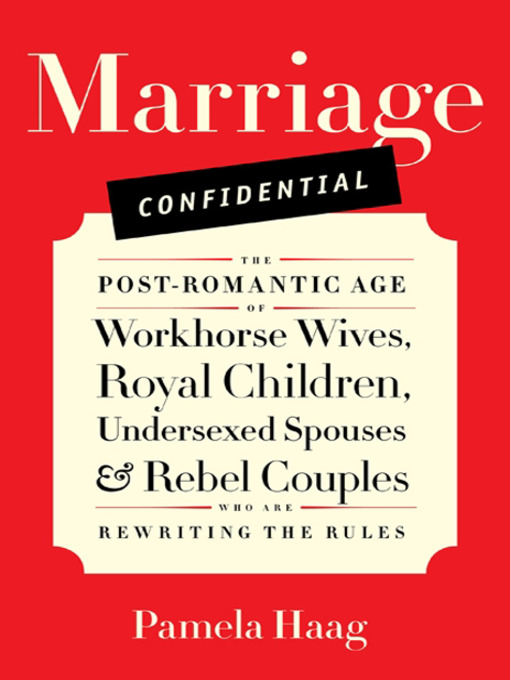"In this timely and thought-provoking analysis of modern coupledom, Pamela Haag paints a vivid tableau of the 'semi-happy' couple. Written with wit and aplomb, this page turner will instigate an insurrection against our marital complacency." —Esther Perel, author of Mating in Captivity
Written with the persuasive power of Naomi Wolf and the analytical skills of Susan Faludi, Pamela Haag's provocative but sympathetic look at the state of marriage today answers—and goes beyond—the question many of us are asking: "Is this all there is?"
Marriage Confidential tackles this question with bracing candor, taking us inside a world where romantic ideas have given way to a "post-romantic" mood and a fair number of marriages end up "semi-happy." It's a world where the husbands of "workhorse wives" pursue the Having It All dream that married women have abandoned; where children have migrated from the children's table to the centerpiece; and where technology, demography, and economy place unprecedented stresses on marital fidelity. Among other examples of marriage trailblazers, Haag even presents a case for how updated ideas of non-monogamy might be an option for the future.
Uniquely weaving together cultural commentary, memoir, storytelling, history, and research, Marriage Confidential gives us a riveting glimpse of what the future of marriage might look like.



